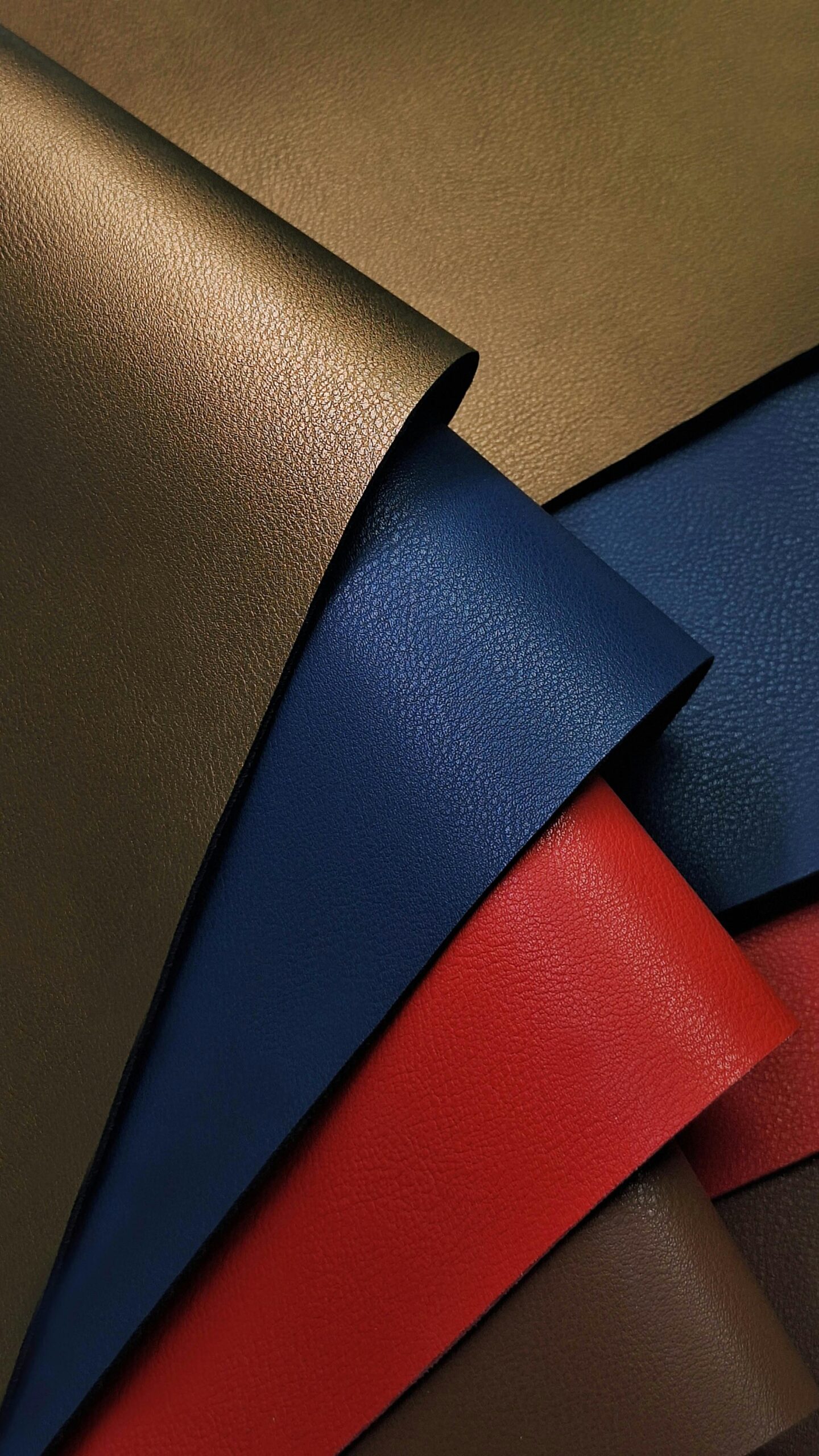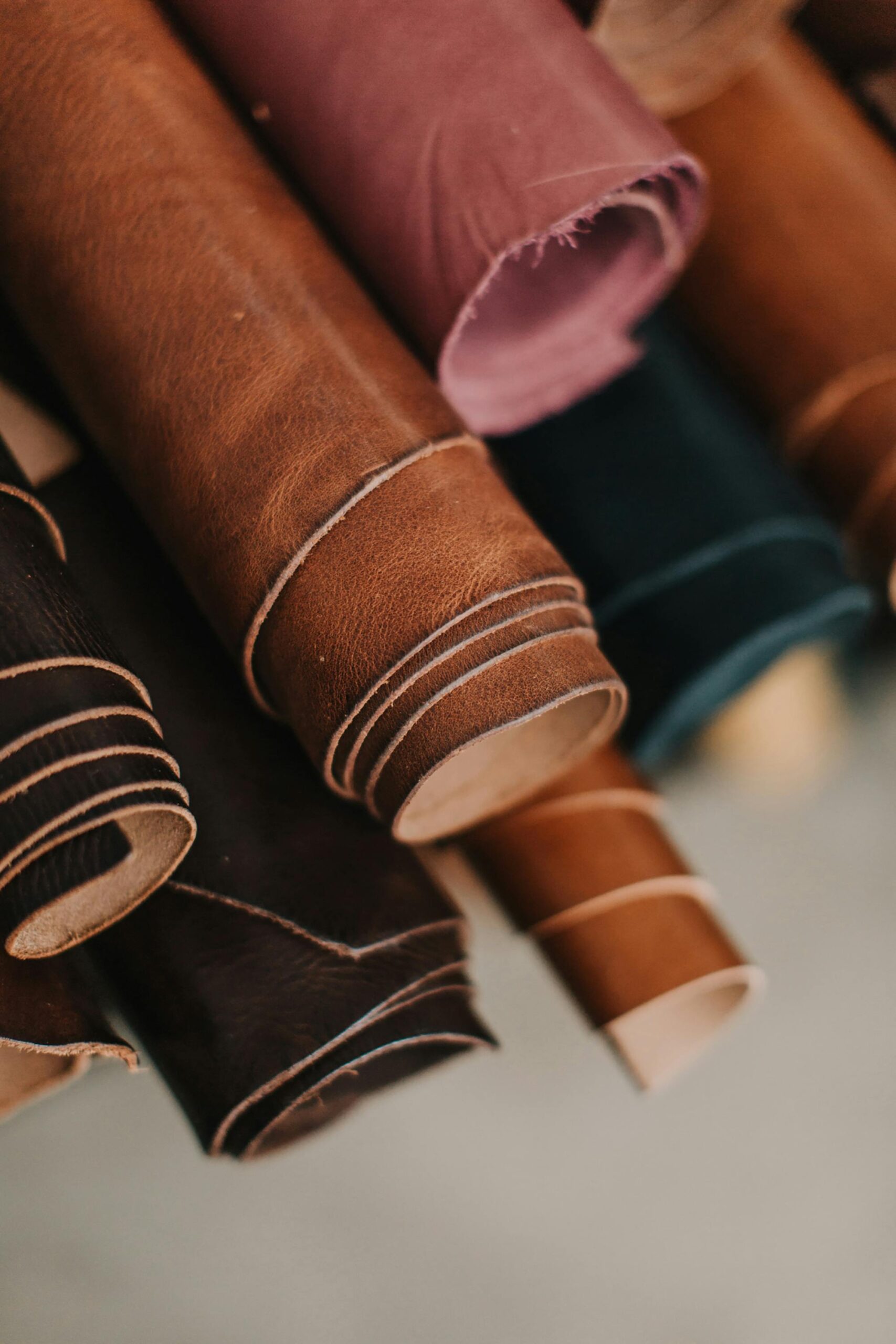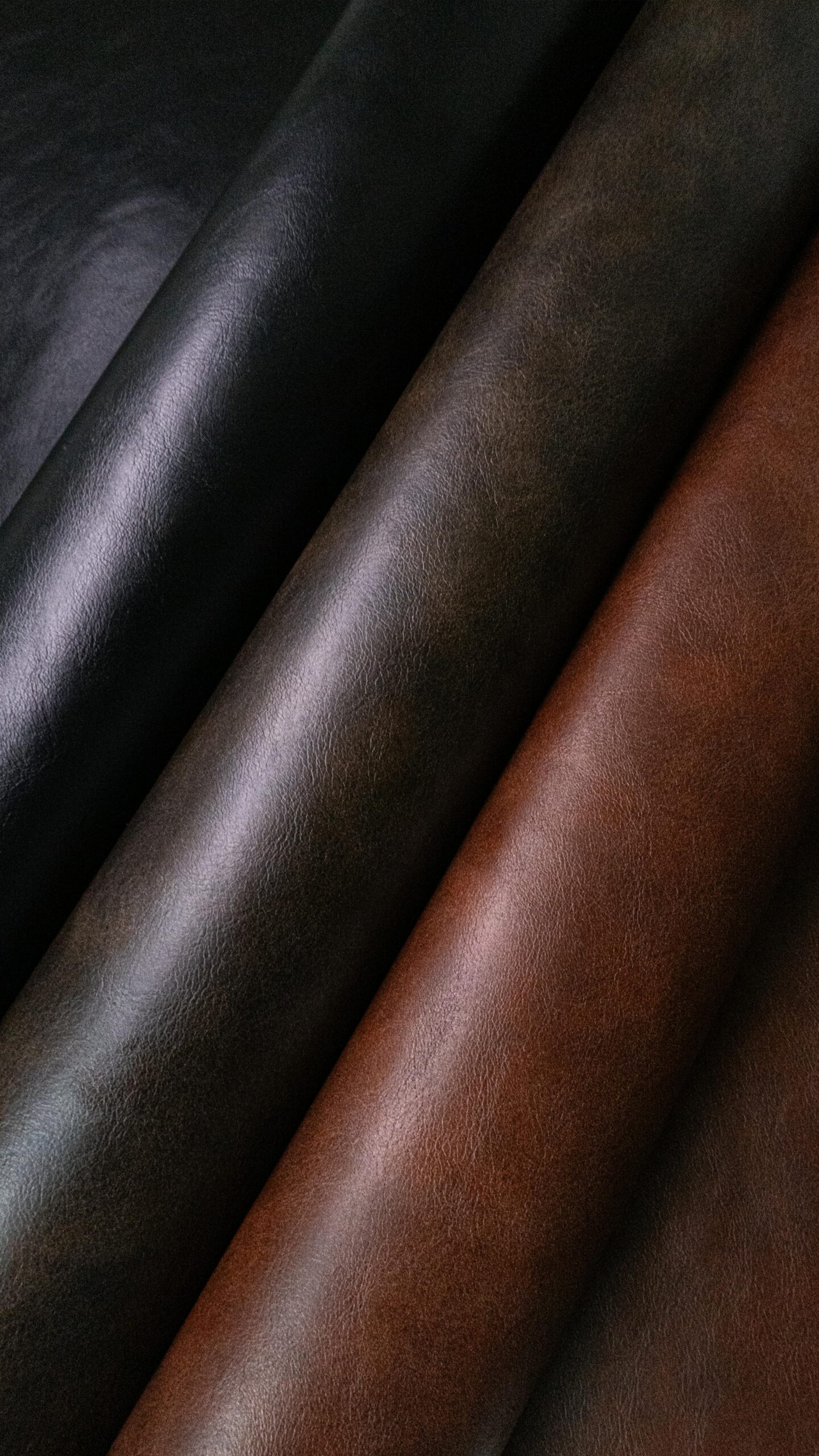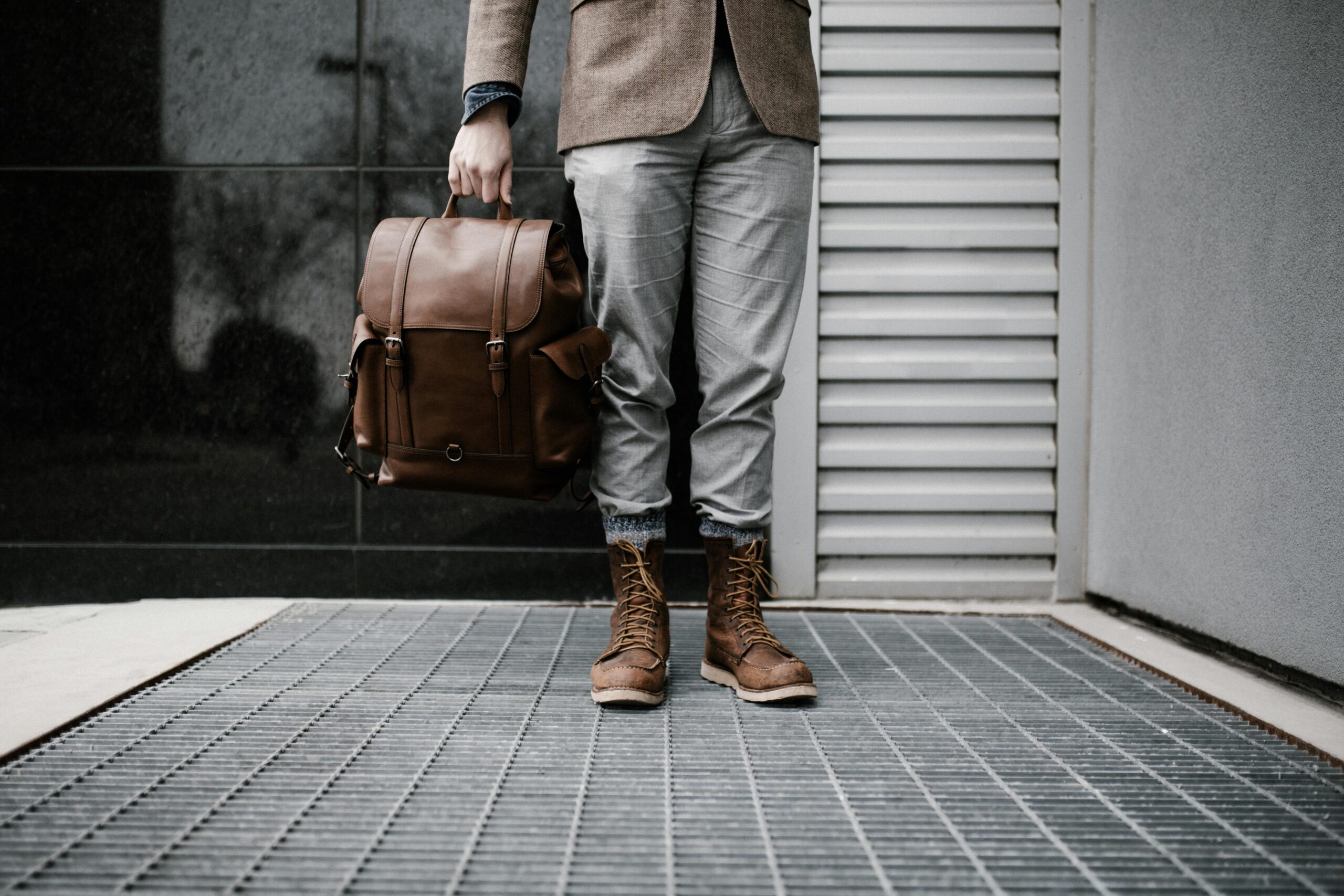This guide will helps you choose the right material for custom bags and apparel. It compares genuine leather with common synthetic options and gives clear picks for daily life. You will see what each material feels like, where it shines, and what to avoid.
What synthetics are? Most synthetic leather uses polyurethane or PVC on a fabric base. Polyurethane is a family of polymers made by reacting diisocyanates with glycols. PVC is a polymer of vinyl chloride that can be plasticized to become flexible for coated fabrics.

What Genuine leather are? Genuine leather. It is tanned animal hide. Full grain keeps the natural top layer; top grain is lightly corrected for a smooth look. You get high strength, repair options, and a surface that takes on patina. Expect a break-in period.

What synthetic leathers are available now?
Today’s market includes PU leather (a polyurethane coating on a fabric base), PVC or “vinyl” leather, microfiber PU leather (a dense nonwoven microfiber base impregnated with PU), silicone “leather” (silicone elastomer on a textile), and TPU-based finishes for extra abrasion resistance.
You will also see plant- or waste-based composites sold as “vegan leather,” such as pineapple leaf, cactus, apple, grape, cork, and mycelium options; most of these still rely on a polymer binder like PU to hold the fibers together. For apparel and fashion bags, PU and microfiber PU dominate because they are lighter and softer.
For wipe-clean needs and some uniforms or upholstery, PVC remains common. Outdoor gear often uses coated textiles (nylon or Cordura with PU or silicone) that function like leather substitutes in wet or high-wear settings.

Quick verdicts
Genuine leather (full grain, top grain)
Best for long service life, patina, and a structured, premium feel. Choose it if you value repair and aging well.
PU synthetic leather
Best for consistent finish, easier care, and budget control. Good for trend colors and light to medium wear.
PVC synthetic leather
Best for wipe-clean needs and firm structure; mind stiffness and heat sensitivity in some builds.
Microfiber synthetics (suede-like)
Best for soft hand, even color, and lighter weight jackets or bag panels. Often marketed as Ultrasuede or similar.
Coated textiles (nylon, Cordura)
Best for rain, low maintenance, and ultralight travel. Check abrasion test method and denier rather than marketing phrases.
Canvas (waxed or not)
Best for heritage look and easy field repairs; needs occasional re-waxing for water repellency. (Use maker guidance for your exact canvas.)

Genuine Leather vs. Synthetic for bag and clothing: side-by-side
Durability
- Leather: Full-grain and good top-grain leather can last for years; fibers stay strong and can be re-stitched and refinished. Typical jacket hides are ~1.0–1.2 mm (examples: 1.0–1.2 mm cowhide on multiple moto jackets), showing a common spec for durable wear.
- PU/PVC “leather”: PU is softer and more flexible; PVC is tougher against moisture but less breathable. PU can degrade faster under heat/humidity than PVC; match the material to use.
- Microfiber (suede-like): Non-woven polyester with PU binder; very even and scuff-resistant for apparel and linings. Many grades are ~0.7–1.2 mm.
- Coated nylon/Cordura: High tear/abrasion resistance with minimal weight. Available in 330D–1000D yarn sizes; higher D is generally tougher.
- Canvas: Strong weave; waxed versions resist scuffs and can be rewaxed.
Water Resistance
- Leather: Naturally water-resistant but not waterproof; needs conditioning.
- PU/PVC: PVC surfaces are moisture-impermeable; PU finishes vary.
- Coated nylon/Cordura: PU-coated fabrics are often rated by hydrostatic head; e.g., 1500 mm means the fabric withstands a 1500 mm water column before leakage (example definition).
- Canvas: Waxed canvas sheds rain but needs periodic rewaxing; avoid machine washing to preserve wax.
Weight
- Leather: Heavier for the same strength; feels substantial.
- Synthetics / Coated nylon: Much lighter; good for travel and all-day carry.
- Canvas: Mid-weight; wax adds heft.
Hand/Feel
- Leather: Warm hand, breaks in, gains patina.
- PU: Smooth, uniform, soft; closer to leather feel than PVC.
- PVC: More rigid, “plastic” hand.
- Microfiber suede: Velvety, even nap; thickness around 0.7–1.2 mm common.
- Coated nylon/Cordura: Technical, slightly textured.
- Canvas: Dry, rugged hand; develops creases and wear marks.
Cost
- Leather: Highest upfront; long service life.
- PU/PVC/Microfiber: Lower upfront; consistent quality.
- Coated nylon/canvas: Wide range; budget to premium.
Typical Use Cases
- Leather: Heirloom totes, briefcases, lifestyle jackets.
- PU/Microfiber: Fashion jackets, budget bags, uniform look.
- PVC: Marine, healthcare, high-moisture settings.
- Coated nylon/Cordura: Travel backpacks, daily tech bags.
- Canvas: Heritage totes, field bags, workwear.
Modu Fashion Will Help You
If you are planning a custom bag or apparel program, we can help you match the right material to your use case.
Material selection: We source PU leathers in multiple thicknesses and grains, including waterborne options.
Performance targets: We work with suppliers to obtain third-party test reports for abrasion, hydrolysis resistance, and colorfastness.
Prototyping and color: We support low-MOQ sampling to help you test hand feel and finish before committing.
Explore More at Modu Fashion and tell us about your project needs here:
Contact our team: Click here (If this page differs, use the Contact link in our site header.)
FAQs
Yes for everyday use if you avoid sharp abrasion and heavy loads; check build quality and any abrasion test the brand lists.
Coated nylon or similar technical textiles. Smooth-finish leather also works if you wipe it dry after exposure.
Genuine leather develops patina and can be repaired; synthetics keep a more constant look but do not age the same way.
Look for a method name next to the number, such as ASTM D3884 or ISO 12947, so you are comparing like tests.
Use a life cycle view. Consider durability, repair, and end of life along with how the material was made.




